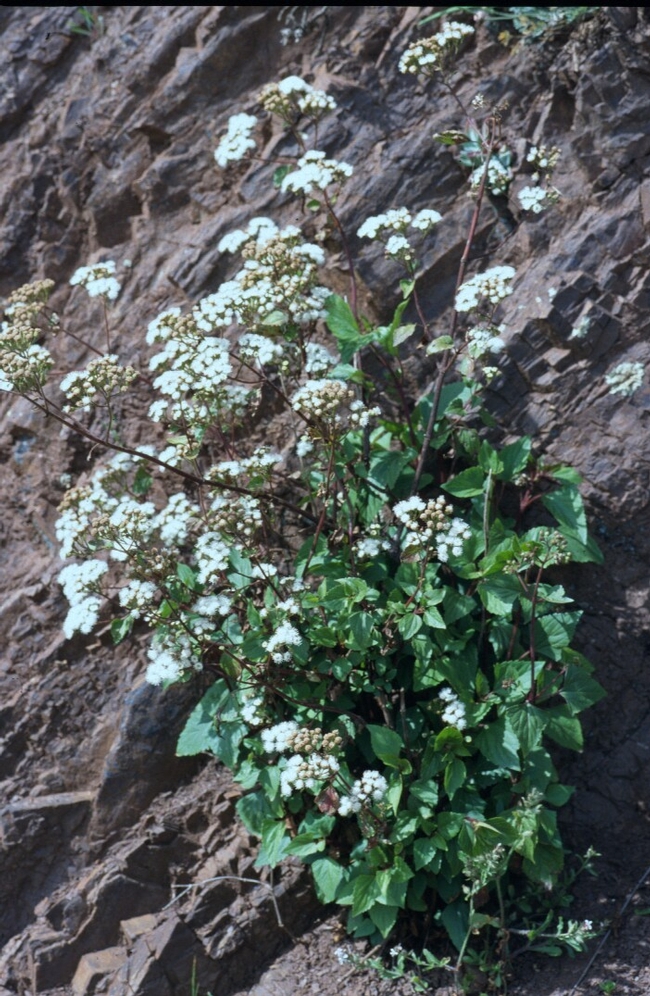Croftonweed (also called thoroughwort) goes by the scientific name Ageratina adenophora or Eupatorium adenophorum. It is native to Mexico and has been introduced to a number of areas around the world. In China, it is the most important invasive plant of tropical forests in the Yunnan area, where it was introduced in the middle of the 19th century. Not only does it cause significant ecological and agricultural damage, but it is considered highly poisonous to cattle and horses, causing chronic lung toxicity. In addition to China, it is an important invasive plant in Hawaii, India, Australia, New Zealand, South Africa, and many other areas of Asia. The plant is a perennial herb or subshrub that grows from 3 to 6 ft tall. It has attractive vegetation with opposite triangular-shaped leaves and clusters of white flower heads at the top of the plant that develop from the end of March to mid-June. Because of its attractive look when grown in gardens, it was introduced to the US as an ornamental species, probably in the early 1900s. Like many other plants in the Asteraceae (sunflower family) it produces numerous wind dispersed seeds, which can contribute to its rapid spread.
In the coastal chaparral of Marin County, where the marine influence is present, croftonweed has been spreading in many of the seep areas, as well as the drier hillsides. It is generally associated with the areas occupied by coyote brush (Baccharis pilularis). Because of its potential to displace endemic native plants, the Golden Gate National Parks Conservancy has prioritized management of croftonweed (though they more commonly refer to it as thoroughwort). In collaboration with our group at UC Davis, we are looking for effective management tools in many different habitats. These trials are designed to test several options for the effective and economical control of croftonweed, as possible site specific techniques, and to compare these new options against currently used control methods. Among the new options, we will include low risk broadleaf specific herbicides applied in different applications techniques, including the traditional backpack sprayer, a thin line drizzle technique used to apply material in hard to reach locations, as well as to reduce the risk of drift, and a third wick application technique that can be used for selective control of non-selective herbicides with no risk of drift. These treatments will be compared to mechanical control methods, as well as conventionally used glyphosate treatments utilizing a backpack sprayer. The objective is to provide multiple treatment methods that are effective and can be used to achieve excellent control of the invasive plant in specific sites. We hope to complete the project by 2018.


